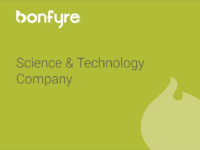The next generation of spaces will need to build on a focus on employee engagement strategies and human performance, with an increased awareness of the changes going on in the work experience.
Companies continue to focus a great deal of attention on building better office environments: open floor plans, formal and informal collaboration spaces, increased natural light, and even a bit of whimsy are all accepted design practices. And, like all of the other aspects of our lives, technology continues to be integrated into our workspace.
The next generation of spaces will need to build on this focus on employee engagement strategies and increasing human performance with an increased awareness of the changes going on in the work experience—specifically communication, workforce inclusion, and a remote workforce.
Changing communication needs
Employees want to feel a strong connection with their company and colleagues. They crave information from managers and senior leadership to understand how they fit into the larger vision and future of the organization, and they expect the information in real-time and in the palm of their hand. Bonfyre recently conducted a survey with a Fortune 500 company and found that roughly 75 percent of the 38 employees and managers surveyed wanted more information about what was going on in their organization.
Much like a communications platform, physical spaces need to create opportunities for formal and informal communication, interaction, and knowledge transfer. In the new Bonfyre offices, there are almost three seats for every employee. One at a workstation or desk, one in an informal working space (couches, break room work spaces, or standing desks), and one in a formal collaboration space ranging in size from two people to 20. This provides everyone a variety of work opportunities and a variety of collaboration opportunities.
Related: 5 Fun Company Culture Ideas to Try This Year
A space to help everyone feel included
Employees who feel connected produce 400 percent more revenue and are 37 percent more productive. Plus, employees who stay engaged and have a close friend at work are seven times more likely to stay at the company. The challenge of building great inclusive spaces that will positively impact your employee engagement strategies is that as a workforce we continue to become more diverse by interests, gender, ethnicity, and age.
In addition, workforces are working from a variety of locations. With nearly 3.7 million employees working from home at least 50 percent of the time, it is essential that companies find ways to foster meaningful and trustworthy relationships with these employees that benefits both the employee and the company.
Flexible collaboration spaces and options for work spaces are a good start, but companies must also think about creating similar virtual experiences for remote workers. Just like the growth of physical social collaboration spaces like coffee bars and kitchen work areas, virtual social tools can help foster increased interaction and engagement for distributed and virtual workers.
Good social communication tools and flexible office experiences create a more inclusive work experience regardless of communication style, work preference, or location — all issues that need to be addressed in the modern office experience.
Employee-centric work experience
There is little doubt the world is becoming more mobile and connected. Designing your employee engagement strategies for the future work experience means moving from physical office planning to a more holistic employee journey that integrates both the physical and virtual experiences. Issues like team camaraderie, collaboration, knowledge sharing, and engagement will be core drivers to planning these experiences, in both the physical and virtual landscapes.
Here are a few suggestions to consider when thinking about creating a more inclusive and engaging work experience:
- Keep technology in mind: Equip your conference rooms with technology needed for easy video conferencing, such as high-quality microphones and web cameras. Make sure individuals have the means to communicate easily with screen sharing or video sharing tools.
- Plan in-person/virtual events: Schedule events to let employees connect in-person on a quarterly basis. Strategically plan these events around a holiday party, quarterly or year-end review, or any other major milestone within your organization. And when you plan these events think about how to virtually engage people before, during, and after the event to extend the impact and investment.
- Make it personal: Encourage personal sharing among employees, which will foster more personal connections. Anything from photos of remote employee’s home office views to plans for an upcoming holiday or photos of a weekend outing with family will foster employee bonds that will help them connect better with each other, and ultimately the company. Remember, people engage when they have an emotional connection.
Implement feedback loops: Create a process—perhaps a recurring company-wide meeting, short surveys or other method—for which all employees have an opportunity to provide feedback on product, marketing, or HR projects, or policies. A combination of in person brainstorming and virtual feedback loops are ideal. - Give people work options: Flexible work experiences not only better accommodate the changing nature of work, but also help give a more diverse group of people the ability to create a work experience that is best for them. This is true in both the physical and virtual work experience.
By equipping your space to fit your entire organization—remote and local—with the right technology and communication policies, you will make your employee engagement strategies more impactful, creating a more engaged workforce which will result in higher productivity and lower turnover.
A version of this article was originally published at Work Design Magazine under the title “5 Ways Office Design Engages Employees (Even Remote Ones)“



 4 min
4 min




